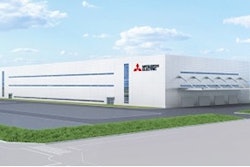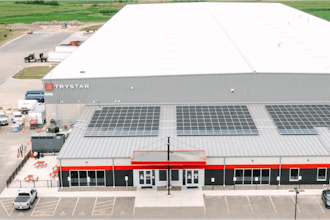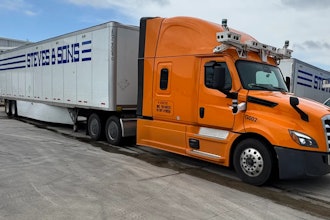
Companies are showing a growing interest in robotics. And although interest is high and companies expect to see greater use of robotics, many business leaders are in the dark about the impact robotics will have on their operations.
A 2020 survey by Tech Republic found that:
- 65 percent of respondents said robots didn’t play a significant role in their industries.
- About the same number (66 percent) expected the roles of robots and robotic systems to increase over the next two to three years.
- 36 percent expected the increase to be “significant.” But they weren’t sure what it would take to support the systems.
- 52 percent said that robotics would require either slightly more or much more time for IT departments.
Vecna saw a similar response at the MODEX 2022 show, with thousands of attendees visiting its booth to learn more about Autonomous Mobile Robots (AMR) and orchestration software. An informal poll found that only about 5 percent of attendees have robots in production, and while they clearly wanted to explore automation, many didn’t know where to start.
The interest extends beyond just the materials handling and logistics markets—enterprises, retailers, grocers, farmers and more want to add automation to their roadmap and human resources (HR) plans. But they see critical barriers in their way.
Dispelling a Few Myths About Robotics
A good way to get past those barriers is to address common myths and misconceptions about robotics.
Myth: Robots will replace humans.
Reality: It's not a zero-sum game. The problem with this mentality is that it assumes a finite number of jobs are available – there are not. The workforce is a constantly evolving ecosystem with openings ebbing and flowing. More often than not, automation helps streamline repetitive, dirty and dangerous tasks humans traditionally perform, increase competitiveness, and create new opportunities for growth and job creation.
Myth: Robots have cognitive reasoning.
Reality: Robots can only “learn” what they’re programmed to learn, and can’t perform new tasks until those tasks are programmed into them.
Myth: Automation is too disruptive and too expensive to adopt
Reality: The cost curve has inverted when comparing automation vs. the status quo. Labor has become scarce and expensive, and automation technologies have become much more accessible through innovations in LIDAR technology, 5G and robots-as-a-service pricing. Automation can start with smaller workflows and scale up or out over time.
Creating a Roadmap in 5 Clear Steps
Once they get past the common misconceptions, many companies still don’t know how to get started on automation. The best thing to do is to start small and scale as needed. The following are the goals that should be accomplished and the timeframe to make them happen.
Week 2—Assess
- Identify and prioritize pain points.
- Choose a workflow to focus on.
- Measure baseline operations.
Month 2—Plan
- Choose a partner built for long-term success.
- Simulate viable solutions to determine ROI at scale.
- Align success criteria across stakeholders.
Month 3—Start
- Choose a site or location with local buy-in and conduct a meaningful mock production implementation.
- Develop key performance indicators (KPIs) and track and measure with analytics.
- Plan for success and understand what’s involved with a full transition at scale.
Month 6—Deploy
- Ramp up to production.
- Conduct WMS, ERP, IT or other meaningful integrations.
- Introduce local management with support and customer success.
Month 8 – Iterate
- Review roll-out and workflows to date.
- Address potential roadblocks and challenges across teams.
- Understand how to successfully deploy technology to increase competitiveness.
Month 12—Scale
- Rinse and repeat original solution at multiple sites.
- Expand to other workflows and solutions at those same locations.
- Integrate teams and optimize solutions for greenfield designs.
- Partner on a long-term automation roadmap and strategy for mutual success.
Automation Has a Bright Future
Automation is on the verge of expanding exponentially. More mobile robots than ever joined the workforce last year, and the material handling mobile robot market is set to explode, with Interact Analysis forecasting fivefold growth.
But growth isn’t limited to warehouse automation. Enterprises across a range of sectors are investing heavily in automation, from autonomous vehicles to healthcare. Forrester predicts the robot process automation (RPA) software and services market, which relieves humans of painstaking, repetitive tasks, could reach $25 billion by 2025. And Forrester said companies are also now looking toward more advanced artificial intelligence (AI) automated systems.
As an entrepreneur, I’ve seen unique opportunities in agriculture and food service, such as Twisted Fields’ use of Acorn. This precision farming rover that can help grow healthier food, inspect crops, seed, weed and harvest while helping to fight climate change.
Opportunities abound as market forces create the need for greater automation and a constant stream of advances in technology increase its accessibility and improves ROI. Organizations simply need to get started.
As we look toward the future, vendors, end-users and non-profit groups such as the MassRobotics need to work together to push the industry along with standards, use cases and real-world, factual information—as opposed to hype. This collaboration will remove the perceived barriers to automation and help organizations enhance robotics’ future.
In the end, robots are here to help humans because making life better for humans is the point. That includes better stewardship over our resources and automation is our best tool to do that.
Daniel Theobald is the founder of Vecna Robotics.




















